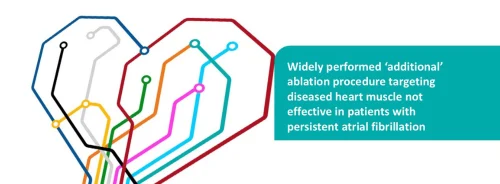Using optical coherence tomography (OCT) to guide stent implantation during percutaneous coronary intervention (PCI) in patients with complex coronary lesions significantly improves survival rates and reduces adverse cardiovascular events compared to the standard angiography-guided PCI, according to late-breaking research presented at the ESC Congress 2024.
Results show that OCT guidance enhances clinical outcomes and improves the safety and effectiveness of coronary stenting. It reduces cardiac death, myocardial infarction, stent thrombosis, and the need for revascularisation by 38% in a cohort of very complex patients.
Patients with coronary artery disease often undergo PCI. The most commonly used method to guide PCI is angiography, which involves a special contrast dye and x-ray to visualise blood flow through the heart arteries, highlighting any blockages.
In contrast, OCT uses light to create cross-sectional and longitudinal images with much higher resolution, providing more accurate and detailed visualisations compared to angiography.
Practical benefits of OCT-guided PCI include offering comprehensive information on coronary vessels, plaques, and implanted stents. This latest study builds on findings from the OCTOBER trial published in 2023, which showed that OCT-guided PCI of complex bifurcation lesions outperforms angiography-guided PCI for cardiovascular outcomes at two years.
The OCCUPI trial enrolled 1,604 patients (aged 19 or older) from 20 centres in South Korea with anatomically complex lesions requiring PCI using drug-eluting stents. Participants were randomised to undergo either OCT guidance (803 patients) or angiography guidance (801 patients), with 1,588 (99%) completing the one-year follow-up.
At the one-year follow-up, patients who received OCT guidance had a 38% reduction in the combined risk of cardiac death, heart attacks, stent thrombosis, and the need for revascularisation compared to those who received angiography guidance (37 patients, 4.6% vs 59 patients, 7.4%). Additionally, OCT-guided patients were 64% less likely to experience a spontaneous myocardial infarction (excluding periprocedural myocardial infarction) or require target-vessel revascularisation than those in the angiography-guided group (0.9% vs 2.4% and 1.5% vs 4.1%, respectively).
The study also found no significant difference in the incidence of contrast-induced nephropathy between the two groups (1.3% vs 0.9%).

These findings provide further evidence that OCT guidance in PCI procedures for patients with complex lesions has a greater impact on improving outcomes than conventional angiography guidance. It is thus important to establish detailed standards for the optimal use of OCT to improve clinical outcomes of PCI in complex cases based on the OCCUPI trial.
Source, Slide and Image Credit: ESC Congress 2024






